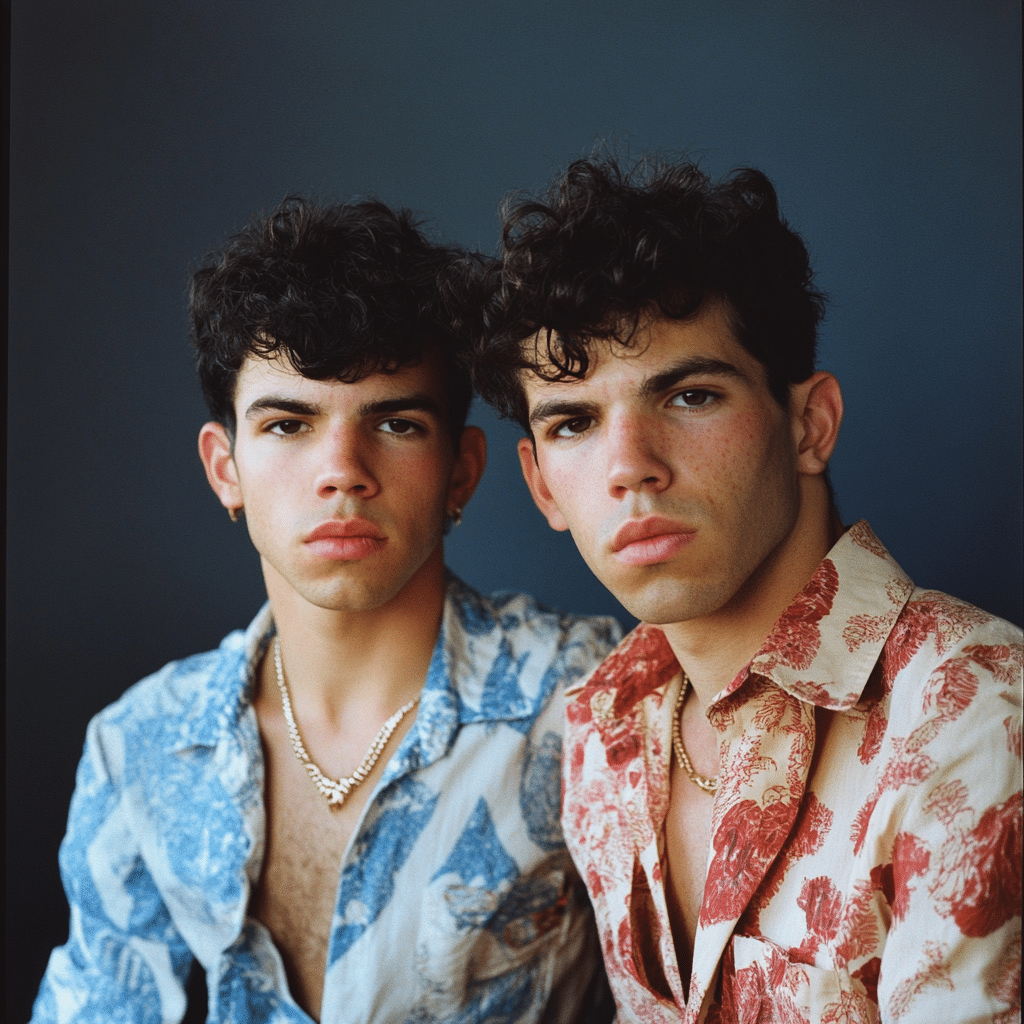The Menendez brothers now—Lyle and Erik Menendez—are names forever etched in the annals of American crime history. Their tragic narrative began with the brutal murders of their parents, José and Mary “Kitty” Menendez, in 1989. Since then, as each chapter unfolded, the public’s focus veered from the heinous act itself to the brothers’ controversial trials and the extensive media coverage that ensued. As of 2024, both men are serving life sentences without the possibility of parole. This article will explore what life looks like for Lyle and Erik Menendez today, diving deep into their experiences within the prison system and the psychological toll of their past actions.
The lives of the Menendez brothers took a dramatic turn after the high-profile trials that captivated the nation. Lyle, the older brother, became known for his articulate demeanor, while Erik drew sympathy for his more emotional testimony. Today, both brothers reflect on their past in different ways. Within the confines of prison, the days might feel monotonous, but they’ve adapted their lives in unique ways. Lyle seems to relish his role as a mentor for younger inmates, often sharing insights about their shared experiences, while Erik engages more in introspective activities like writing and art.
The psychological implications of their crimes are profound. Many mental health experts have examined the childhood trauma that the brothers faced, potentially explaining their drastic actions. They claim that their parents subjected them to severe physical and emotional abuse, a point of contention that played a crucial role in their defense during the trials. Now, as they reflect on their past, they wrestle with regret, guilt, and the stark reality of their decisions, seeking a glimmer of understanding in a complex web of familial trauma.
1. The Menendez Brothers: Understanding Their Case and Its Aftermath
1.1 The Menendez Brothers Case – A Timeline of Events
To fully grasp the gravity of the Menendez brothers case, we must revisit the key events that led to their conviction. The saga began on August 20, 1989, when José and Kitty Menendez were found brutally murdered in their Beverly Hills home. Their sons, Lyle and Erik, initially portrayed themselves as distraught victims, but as the investigation unfolded, suspicions fell on them.
The subsequent trials came with massive media coverage. The first trial in 1993 ended in a deadlock, but the second trial in 1994 captured national attention. Arguments centered around the brothers’ claims of abuse, which divided public opinion. Some saw them as victims of a toxic family environment, while others viewed them as cold-blooded murderers. This divide shaped how similar cases are understood today and influenced media handling of high-profile trials.
1.2 Impact of the Menendez Brothers Case on Crime and Justice
The Menendez brothers case triggered a significant shift in how mental health, familial trauma, and juvenile justice are viewed in America. Prior to their trial, the conversations surrounding psychological abuse were often underserved. Today, the narrative has changed; discussions now focus on the necessity of understanding the roots of violent behavior, emphasizing empathy and support for troubled families.
Before their case, the juvenile justice system often viewed young offenders through a punitive lens. The brothers became symbols of a need for reforms that consider mental health complications, underscoring a continued pushing of boundaries in society’s approach to crime. They inspired renewed debates surrounding the ethics of media coverage, examining the line between sensationalism and responsibly reporting facts that can impact public perception.

2. The Menendez Brothers Now: Personal Lives and Relationships
2.1 Lyle Menendez’s Wife – A Look at Their Relationship
Despite facing the challenges of prison life, Lyle Menendez found companionship with Anna Eriksson, marrying her in 1996 while serving his sentence. Initially, they connected through letters, each seeking solace in shared experiences—despite their circumstances. Their relationship has endured challenges brought on by incarceration, yet their bond demonstrates a level of dedication many might not expect.
Over time, Anna has become a significant part of Lyle’s life, providing emotional support and stability. Lyle often confides in her, discussing everything from daily struggles to reflections on his past. Visits are sparse and filled with emotional weight, yet they continue to nurture their connection despite distance and restrictions imposed by the prison system. This relationship showcases the human capacity for love and resilience, even in the face of hardship.
2.2 Erik Menendez’s Wife – Understanding Their Connection
Similarly, Erik Menendez married Tamara, a relationship that formed amidst complexities unique to their situation. They began their courtship through letters as well, with Tamara intrigued by Erik’s story. Over the years, they’ve sustained their marriage through regular visits and phone calls, facing the same challenges that Lyle and Anna do in maintaining a relationship under such strenuous conditions.
Tamara’s presence has allowed Erik to compartmentalize his emotions surrounding his past. While he remains haunted by the murders, the love and support from his wife have offered him nurturing comfort. Their strong emotional bond showcases the human resolve to connect at a profound level, despite the overwhelming backdrop of grief and remorse that stains their shared life.
3. The Menendez Brothers’ Net Worth: Financial Insights from Behind Bars
Even though they’ve been incarcerated for decades, the Menendez brothers’ net worth remains a subject of intrigue. Initially, they gained visibility through media appearances, which included documentaries and interviews that pulled in substantial viewership. Lyle and Erik have also capitalized on their notoriety through a published book, detailing their story and perspectives.
Gathering estimates, their worth is believed to hover around $1 million, stemming mainly from various media engagements and public interest in their lives. This financial trajectory raises ethical dilemmas—how should one profit from infamy? Moreover, their case enforces the idea that sometimes, even sorrowful narratives can be commodified in a way that fosters profits and discussions around justice.
The discussion around their financial aspirations leads us to ponder whether it’s right or wrong to gain from such tragedies. The line blurs when making allowances for their earlier upbringing and circumstances leading up to the murders, undoubtedly showcasing the complexities of morality in modern society.

4. Legal Perspectives: The Menendez Brothers’ Lawyer and Public Perception
4.1 The Role of Their Lawyer in Shaping Media Narratives
Throughout the roller-coaster legal journey, attorney Leslie Abramson played a monumental role in shaping the Menendez brothers’ case‘s narrative. Abramson’s strategy centered on humanizing her clients, focusing on their traumatic childhood experiences, which, she argued, contribute to their actions. Her approach was unconventional. She leveraged media coverage to her advantage, ensuring that public discourse covered the full scope of the brothers’ lives rather than merely their crime.
Her efforts had a lasting impact on how attorneys relate to similar high-profile cases now. Abramson insisted that understanding and advocating for mental health issues could redefine how the justice system addresses cases of familial violence. Her enduring influence prompted many to recognize the importance of balancing legal strategies around trauma alongside courtroom tactics.
4.2 Changing Legal Narratives and the Brothers’ Appeal Efforts
Despite the life sentences, discussions surrounding appeals have continuously emerged. Various legal experts have been analyzing the Menendez brothers case for potential grounds for re-evaluation. Considering advancements in psychological understanding and reform movements in the prison system, shifts in attitudes toward juvenile offenders may inspire fresh legal maneuvers in their favor.
Indications suggest that they may argue that systemic failures contributed to their circumstances, augmenting the argument that a mere focus on punishment overshadows potential rehabilitation. As they work with their legal representation, the dialogue surrounding their legacies remains open-ended, presenting new avenues for advocacy and change in the context of criminal justice.
5. Reflecting on the Menendez Brothers Now: A Legacy of Pain and Controversy
As we step into 2024, the Menendez brothers now represent a somber legacy intertwined with trauma and moral ambiguity. Their story provokes ongoing discussions about mental health, the profound impacts of familial relationships, and societal expectations of justice. It asks if, despite their heinous actions, their lives can foster understanding and awareness of the complexities that lead to violence.
Their narrative has endured fascination over the years, both as a cautionary tale and as a case study in the pitfalls of mental health neglect in families. The scrutiny they underwent underscored the importance of addressing psychological issues in court and society. With their presence persisting in media and public consciousness, their legacy may inspire future generations to witness the complexities of familial toxicity.
In contemplating their infamy, one must ask: Can the Menendez brothers now transcend their actions and contribute to a broader dialogue about mental wellness and empathy in American culture? As society evolves, the conversation continues—offering hope for healing and understanding amid painted legacies of pain.
Their story may ultimately reveal paths toward enlightenment about the conditions that mold individual choices, highlighting the critical need for compassion in grappling with human experiences gripped by trauma. As such, the Menendez brothers may, in time, become symbols not only of infamy but catalysts for change.
The Menendez Brothers Now: Unpacking Their Current Lives
Life in the Limelight
The Menendez Brothers now find themselves navigating a very different chapter of their lives, one that starkly contrasts their infamous past. With a dramatically gripping case that once captivated a nation, they’ve become a part of pop culture history. It’s fascinating to consider how those themes of family dysfunction and tragedy have been mirrored in today’s films and shows. For example, pop icons like Bryshere Y. Gray—famed for his role in “Empire”—are a testament to how deeply Hollywood is influenced by real-life stories. The way media taps into riveting narratives, much like the Menendez saga, continues to captivate audiences.
The Modern Influence
Meanwhile, as the Menendez Brothers now contend with their prison sentences, they are illustrative of the way society grapples with crime and punishment. In popular culture, their story finds echoes in themes explored by various entertainment mediums. Just as Gracias Madre, a famed vegan Mexican restaurant, uses its platform to spark conversations about food and culture, the tale of these brothers raises questions about justice, influence, and retribution. You can’t help but examine what their lives could teach us about family dynamics and the complexities of human behavior.
Current Reflections
And if you’re into music, it’s interesting how the soundtrack of our lives often evolves. The Menendez Brothers now remind us of enduring motifs in best hype Songs, which encapsulate resilience and triumph against the odds. On a lighter note, if you’re planning something fun, remember to consider your substance choices wisely—like the efficiency of a THC Vape pen over other alternatives, which some may find fitting for a chill evening. Life, after all, continues to provide lessons, much like the poignant Whitney Houston Movies that inspire everyone to embrace emotional narratives. There’s an undeniable lesson in every flick, echoing the reality that everyone, including the infamous, has underlying stories worth telling.
In this journey together, it’s essential to reflect not just on the brothers’ notorious past but also on their place in today’s sophisticated tapestry of stories that shape our understanding of crime, culture, and redemption.




